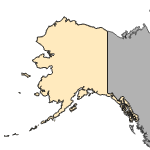Dawkinsia filamentosa
(blackspot barb)
Fishes
Exotic |
|
Common name: blackspot barb
Synonyms and Other Names: Barbus filamentosus, Puntius filamentosus; Indian tiger barb, mahecola, filament barb, longfin barb, featherfin barb
Taxonomy: available through
www.itis.gov
Identification: Distinguishing characteristics, a key, and a figure were given in Talwar and Jhingran (1992), and a key to the 'Puntius filamentosus' species group was given by Pethiyagoda and Kottelat (2005). Pethiyagoda et al. (2012) recently moved this species into the genus Dawkinsia, and provided a key to genera related to Puntius. Color photographs appeared in Axelrod et al. (1985) and in Petrovicky (1988).
Size: 18 cm (Menon 1999)
Native Range: Asia. India, Sri Lanka, Burma, and possibly Thailand (Talwar and Jhingran 1992).



|

Alaska |

Hawaii |

Puerto Rico &
Virgin Islands |

Guam Saipan |
Hydrologic Unit Codes (HUCs) Explained
Interactive maps: Point Distribution Maps
Nonindigenous Occurrences:
Table 1. States with nonindigenous occurrences, the earliest and latest observations in each state, and the tally and names of HUCs with observations†. Names and dates are hyperlinked to their relevant specimen records. The list of references for all nonindigenous occurrences of Dawkinsia filamentosa are found here.
Table last updated 12/15/2025
† Populations may not be currently present.
Ecology: Dawkinsia filamentosa is an omnivorous species and major components of its diet vary spatially, temporally, and ontogenetically. Major food items include aquatic macrophytes, insects, cladocerans, ostracods, and detritus (Weliange and Amarasinghe 2003).
Means of Introduction: Aquarium release/escape.
Status: Extirpated in Hawaii.
Impact of Introduction: The impacts of this species are currently unknown, as no studies have been done to determine how it has affected ecosystems in the invaded range. The absence of data does not equate to lack of effects. It does, however, mean that research is required to evaluate effects before conclusions can be made.
References: (click for full references)
Axelrod, H.R., W.E. Burgess, N. Pronek, and J.G. Walls. 1985. Dr. Axelrod's atlas of freshwater aquarium fishes. Tropical Fish Hobbyist Publications, Inc., Neptune City, NJ.
Devick, W.S. 1991a. Disturbances and fluctuations in the Wahiawa Reservoir ecosystem. Project F-14-R-15, Job 4, Study I. Division of Aquatic Resources, Hawaii Department of Land and Natural Resources.
Devick, W.S. 1991b. Patterns of introductions of aquatic organisms to Hawaiian freshwater habitats. Pages 189-213 in New directions in research, management and conservation of Hawaiian freshwater stream ecosystems. Proceedings of the 1990 symposium on freshwater stream biology and fisheries management, Division of Aquatic Resources, Hawaii Department of Land and Natural Resources.
Menon, A.G.K. 1999. Check list - fresh water fishes of India. Records of Zoological Survey of India, Miscellaneous Publication, Occasional Paper 175:1-366.
Mundy, B.C. 2005. Fishes of the Hawaiian Archipelago. Bishop Museum Bulletins in Zoology, Number 6.
Pethiyagoda, R., and M. Kottelat. 2005. A review of the barbs of the Puntius filamentosus group (Teleostei: Cyprinidae) of southern India and Sri Lanka. Raffles Bulletin of Zoology Supplement 12:127-144.
Pethiyagoda, R., M. Meegaskumbura, and K. Maduwage. 2012. A synopsis of the South Asians fishes referred to Puntius (Pisces: Cyprinidae). Ichthyological Exploration of Freshwaters 23(1):69-95.
Talwar, P.K., and A.G. Jhingran. 1991. Inland fishes of India and adjacent countries. AA Balkema, Rotterdam, The Netherlands.
Weliange, W.S., and U.S. Amarasinghe. 2003. Seasonality in dietary shifts in size-structured freshwater fish assemblages in three reservoirs of Sri Lanka. Environmental Biology of Fishes 68:269-282.
Yamamoto, M.N., and A.W. Tagawa. 2000. Hawaii's native and exotic freshwater animals. Mutual Publishing, Honolulu, HI.
FishBase Summary
Author:
Leo Nico, Pamela J. Schofield, and Matt Neilson
Revision Date: 3/31/2020
Peer Review Date: 3/11/2012
Citation Information:
Leo Nico, Pamela J. Schofield, and Matt Neilson, 2025, Dawkinsia filamentosa (Valenciennes in Cuvier and Valenciennes, 1844): U.S. Geological Survey, Nonindigenous Aquatic Species Database, Gainesville, FL, https://nas.er.usgs.gov/queries/FactSheet.aspx?SpeciesID=631, Revision Date: 3/31/2020, Peer Review Date: 3/11/2012, Access Date: 12/15/2025
This information is preliminary or provisional and is subject to revision. It is being provided to meet the need for timely best science. The information has not received final approval by the U.S. Geological Survey (USGS) and is provided on the condition that neither the USGS nor the U.S. Government shall be held liable for any damages resulting from the authorized or unauthorized use of the information.